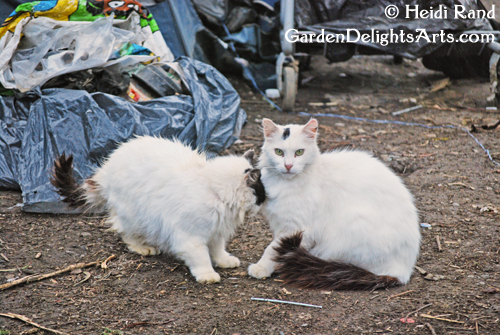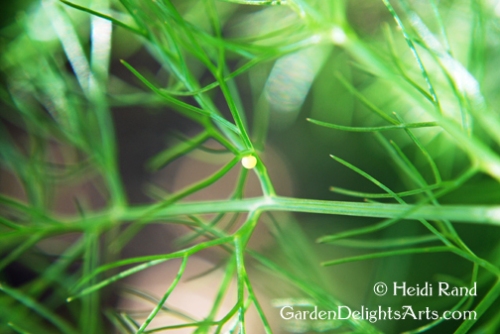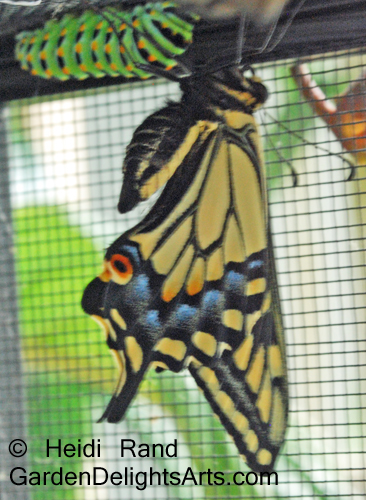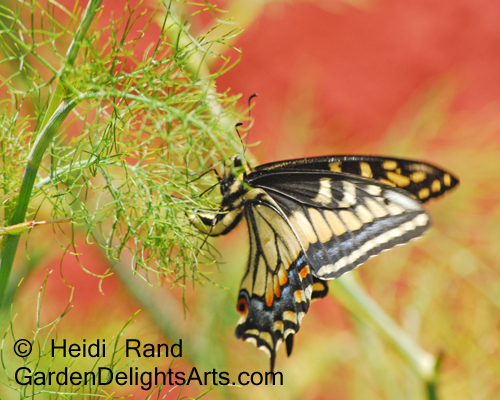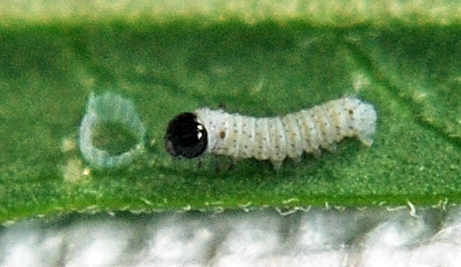The calendar says it’s summer, but my weatherman (aka George) observes: Brrrrr … . Happily, despite our fog and chilly temps, the Anise Swallowtail butterflies are here on schedule. I haven’t seen any adults visit the garden, but they’re leaving precious yellow eggs on the fennel. The egg on top was probably laid today, the one with darkening bands was likely laid several days ago. This is an extreme closeup shot – the eggs are smaller than the head of a pin.
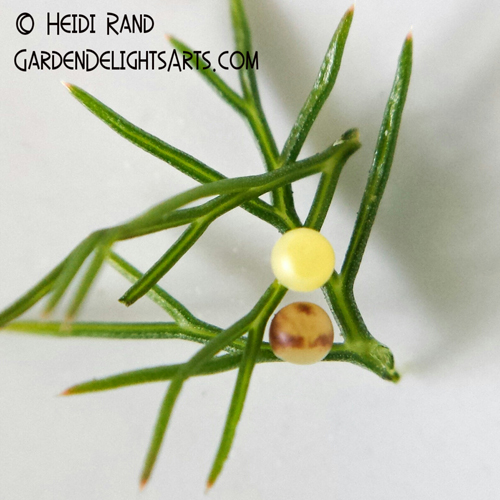
I took this photo in 2013 of a female laying an egg (ovipositing) on the same fennel plant.
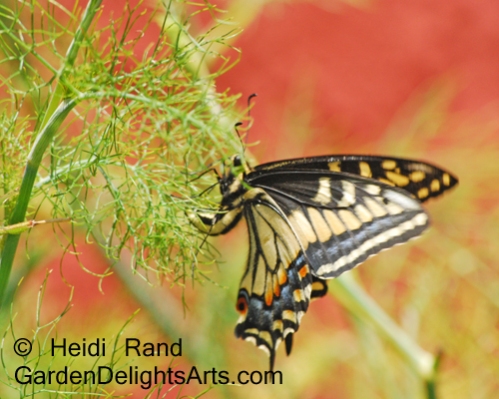
We keep the eggs and caterpillars inside in a net cage where we feed them and keep the chrysalises safe until the adult butterflies emerge. We also rescued several caterpillars from a plant in our neighborhood that has been cut down in previous years. This guy just shed his skin (on the right).
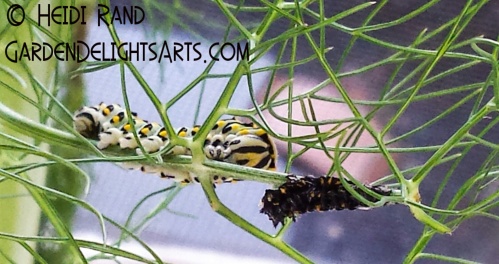
See how coloration varies in different larval stages.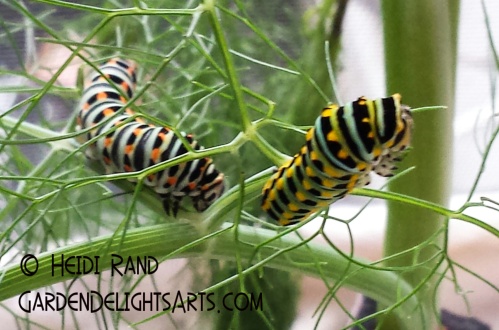
So far one adult has emerged.
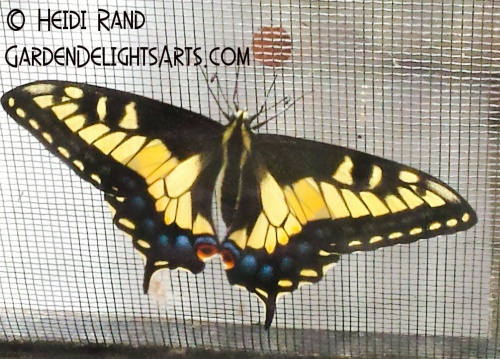
When the sun finally came out I put her onto a lily plant on the deck, and after a minute or so she happily flew away.
Want to see more of these wonderful butterflies and their life cycle?
My 2013 post about anise swallowtail butterflies.
And from 2012. Another from 2012. And another!
And from 2011. Another from 2011. And another!

